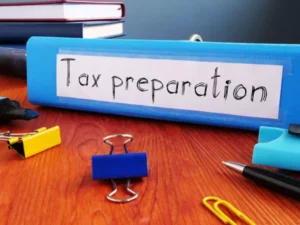Content

The Accounting Office ensures that the acquisition of an asset, by any method, is properly recorded in the Accounting System and reconciled to the accounting records. In modern financial accounting usage, the term fixed assets can be ambiguous. Specific non-current assets (Property, plant and equipment, Investment property, Goodwill, Intangible assets other than goodwill, etc.) should be referred to by name.

Fixed assets most commonly appear on the balance sheet as property, plant, and equipment (PP&E). Depreciation is an accounting term that is used to spread the loss in value of an asset over multiple years and to offset this against its original purchase price, so the business can assess its true, or net, value. Cash and accounts receivable, for example, fall into the category of current assets. Whether you’re new to F&A or an experienced professional, sometimes you need a refresher on common finance and accounting terms and their definitions. BlackLine’s glossary provides descriptions for industry words and phrases, answers to frequently asked questions, and links to additional resources.
Organization
One method to measure how efficiently a company utilizes its fixed asset base is the fixed asset turnover ratio, which measures the efficiency at which a company can generate revenue using its PP&E. Yet, inventory is classified as a current asset, whereas PP&E is treated as a non-current asset. Unlike current assets, non-current assets are typically illiquid and cannot be converted into cash within twelve months.

For example, intangible assets, such as a logo or a customer database, are items that give the business value but are not physical. BlackLine is a high-growth, SaaS business that is transforming and modernizing the way finance and accounting departments operate. Our cloud software automates critical finance and accounting processes.
What are the advantages of fixed assets?
To get this metric, start with the purchase price of the fixed asset(s) (plus improvements), also known as the gross fixed asset amount, and deduct the accumulated depreciation. Fixed assets are also known as PPE – property, plant, and equipment. They are tangible, identifiable, and expected to generate income for over a year. If a business creates a company parking lot, the parking lot is a fixed asset. However, personal vehicles used to get to work are not considered fixed assets.
All amounts vouchered for capitalized property will be fed extracted, when running the asset extract process, and transferred to the Fixed Assets System with an origination tag. These O-tags are reviewed and approved as permanent assets as appropriate. The Purchasing staff ensures that the account number paying for the asset and the custodian departmental account number, if different, are clearly indicated on the requisition. The necessary funds are encumbered and the purchase order is forwarded to the vendor. The lessee records a capital lease as an asset, along with a corresponding liability, in the Investment in Plant Fund.
How do companies use fixed assets?
Simply put, this means that you need to account for any decrease in value of your fixed asset. Types of fixed assets common to small businesses include computer hardware, cell phones, equipment, tools and vehicles. Fixed assets are often referred to as property, plant, and equipment, or PPE—the three most common kinds of fixed assets. For example, the fixed assets of a frozen cookie dough manufacturer might include a corporate office (property), a cookie dough factory (plant), and machines that make cookie dough (equipment). There are many kinds of fixed assets, be they for businesses or people.
Although carrying value usually decreases over time, under International Accounting Standard (IAS) 16, you can revalue some assets so that the carrying value increases. When an organization anticipates that it can sell an asset or that an asset will otherwise provide value at disposal, that amount represents the salvage value. You deduct the salvage value from the initial cost to determine the amount that will be depreciated through the service life of the asset. Non-monetary transactions usually involve real estate swaps or asset transfers, as when someone donates an asset to a nonprofit. Suppose a consulting firm is moving to a new office and decides to donate its old desks to a charity. Typically an organization will use these three factors to establish a month depreciation expense for each asset.
Drive visibility, accountability, and control across every accounting checklist. Reinsurance is a practice that insurance providers use to minimize risk by buying their own coverage from other companies. In some cases, it is roughly calculated as the difference between Current Assets and Current Liabilities. However, this is a non-precise approach since in this formula comprises cash items as well as non-cash and operative items such as inventories or receivables. An on-going physical inventory is conducted by the Receiving/Inventory Control Department so that the entire campus is generally inventoried within a cycle of no more than seven years. The statistical sampling method of inventory verification performed for an interval of two years may also be adopted to comply with grant and contract requirements.
- Specific non-current assets (Property, plant and equipment, Investment property, Goodwill, Intangible assets other than goodwill, etc.) should be referred to by name.
- BlackLine’s foundation for modern accounting creates a streamlined and automated close.
- Finally, almost all companies have some fixed assets they use to organize their business operations—perhaps to facilitate transactions, expedite work, or protect other assets.
- In order to facilitate the determination of the capitalization cost, any components necessary to place the property into service should be included on the same requisition.
- Keep in mind that impairment accounting applies to a situation when a significant asset, or collection of assets, is not as economically viable as originally thought.
- Without accurate information, organizations risk making poor business decisions, paying too much, issuing inaccurate financial statements, and other errors.
- Fixed assets usually form a substantial investment for an organization, and each asset can include many components requiring special attention.
A business’s fixed assets are likely to consist of real estate, machinery or engineering facilities they own. An individual’s fixed assets are more likely to consist of a home, land and/or valuables. They may also be referred to as property, plant and equipment what is a fixed asset and recorded like that on a balance sheet. To record the purchase of a fixed asset, debit the asset account for the purchase price, and credit the cash account for the same amount. For example, a temporary staffing agency purchased $3,000 worth of furniture.
Statements of cash flows.
Most transfers are processed by the Receiving/Inventory Control Department, although the Accounting Office also has the capability to process transfer transactions. The Receiving/Inventory Control staff verifies the packing slip, designates the item as “Received” in the Purchasing System, and forwards any invoice to the Accounts Payable Clerk for payment. Get instant access to video lessons taught by experienced investment bankers.
Fixed asset accounting is the act of keeping records of all financial activities related to fixed assets, such as purchase, depreciation, audits, and disposal. Fixed assets can include buildings, computer equipment, software, furniture, land, machinery, and vehicles. For example, if a company sells produce, the delivery trucks it owns and uses are fixed assets.
Journal Entry for Replacing Assets
In this example, the asset was purchased for $100,000, and accumulated depreciation is $80,000. A buyer paid $54,000 cash for the asset, which https://www.bookstime.com/ results in a gain on disposal of $34,000. For practical purposes, you may treat individual items in an asset category as one asset.
What does fixed assets mean simple?
Fixed assets are physical or tangible items that a company owns and uses in its business operations to provide services and goods to its customers and help drive income. These assets, which are often equipment or property, provide the owner long-term financial benefits.
The new asset is unique, gets a new ID and represents 25% of the original asset. The asset is one unit and gains the accumulated depreciation of $83.33, and the net value is $416.67. ASC 606, constitutes the biggest accounting change in over a decade. Learn how NetSuite enables you to streamline revenue accounting function to ensure compliance with current and future guidelines. A fixed asset does not necessarily have to be fixed (i.e., stationary or immobile) in all senses of the word. Depreciation can be calculated using the straight-line method, which subtracts an equal amount each year over the life of the asset.
Additional Services
You can enter the purchase of the fixed asset as an expense, select the category it falls under, and turn on depreciation. Some fixed assets, such as land, do not depreciate because it is is not possible for them to be ‘used’ or ‘old’. When determining the value of a fixed asset, the method of depreciation must be taken into account. Accumulated depreciation is the total of the depreciation expenses that reflect the loss of value of a fixed physical asset since you started using it. Using the balanced sheet, you can determine that The Home Depot held over $31.4 billion worth of fixed assets in that year ($51,236 – $19,810).
What’s considered a fixed asset?
A fixed asset, or noncurrent asset, typically is an actual, physical item that a company buys and uses to make products or servicea that it then sells to generate revenue. For example, machinery, a building, or a truck that's involved in a company's operations would be considered a fixed asset.



